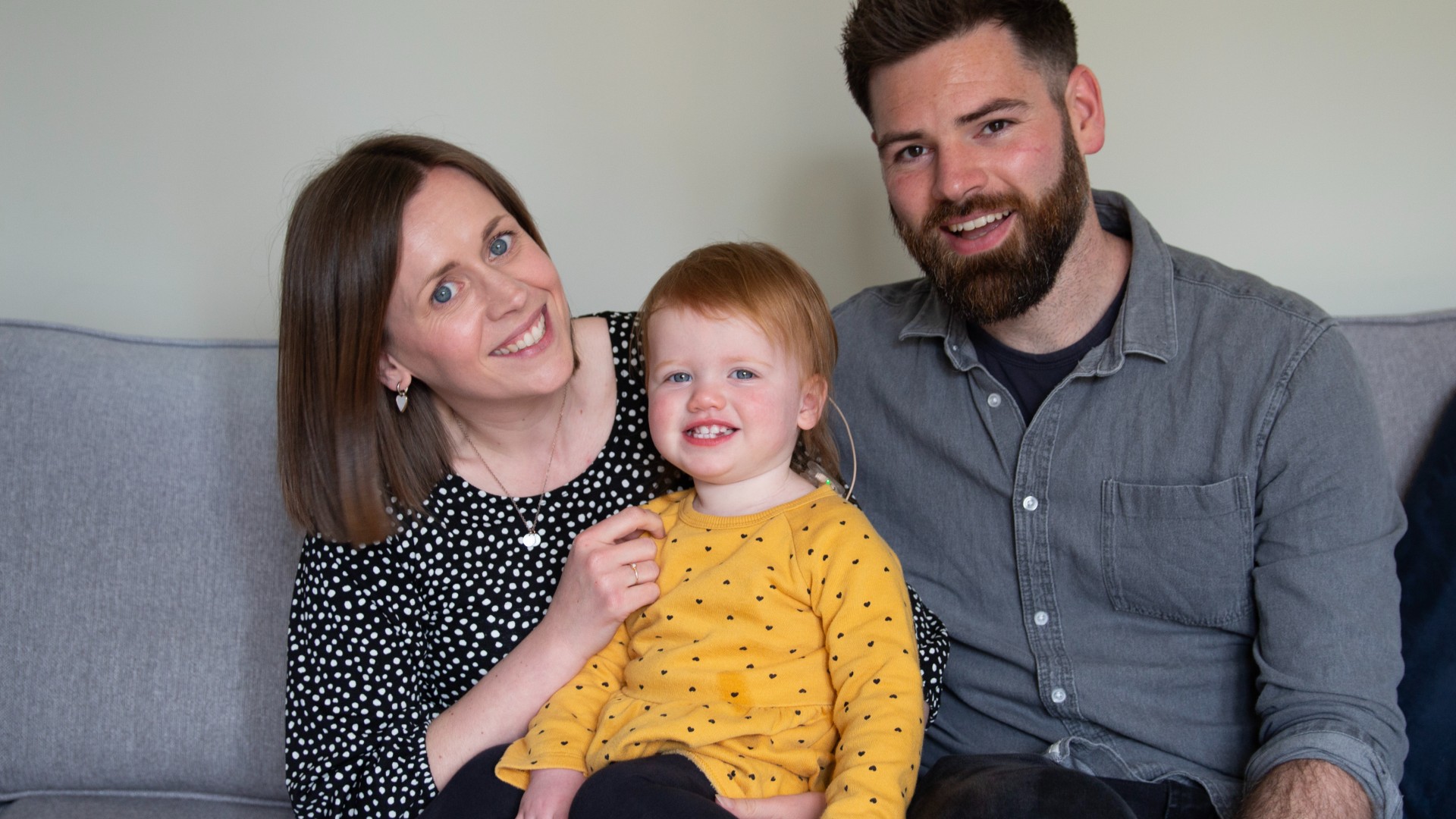Deaf baby can hear after 'mind-blowing' gene therapy treatment
Seven months after her treatment, the baby girl can now respond to her parents' voices without the aid of a cochlear implant.

A toddler who was born completely deaf due to a rare genetic condition can now hear unaided thanks to a pioneering gene therapy.
Opal Sandy, who is now an 18-month-old girl from the U.K., is the youngest child in the world to receive this type of gene therapy, which uses a harmless, modified virus to correct genetic mutations in the body's cells. In this case, the therapy replaced a mutant gene associated with deafness with a working copy of that gene, according to a statement released May 9 by Cambridge University Hospitals.
Very similar gene therapies are being tested in other trials and have shown early success in treating slightly older children with the same type of hearing loss as Opal.
Known as auditory neuropathy, this type of hearing loss arises when the ears can detect sound but can't relay that information to the brain. The condition is caused by mutations in a gene called OTOF that normally makes otoferlin, a protein needed for the inner ear to talk to neurons that are linked to the brain. The condition accounts for between 1% and 8% of cases of congenital hearing loss that occurs in the absence of other symptoms.
Related: CRISPR can treat common form of inherited blindness, early data hint
Opal was diagnosed at 3 weeks old. When she was 11 months old she became the first patient treated in a global trial of the new gene therapy. She was given the new treatment via an injection into her right ear. The virus injected during the procedure — known as an adeno-associated virus — delivers a working copy of OTOF to cells in the ear to replace the mutated version. Afterwards, the virus is naturally eliminated from the body.
Doctors also installed a cochlear implant in Opal's left ear; these devices help users hear some sound by relaying signals to the brain that their ear cells can't.
Get the world’s most fascinating discoveries delivered straight to your inbox.
Within four weeks of the gene therapy, Opal could respond to sounds even when her cochlear implant was switched off, her doctors reported. Twenty-four weeks out from treatment, her treated ear could pick up soft sounds, such as whispering, at "close to normal" hearing levels. Now, at 18 months old, Sandy can respond to her parents' voices without her implant activated and say words such as "dada" and "bye-bye."
"When Opal could first hear us clapping unaided it was mind-blowing — we were so happy when the clinical team confirmed at 24 weeks that her hearing was also picking up softer sounds and speech," Opal's mother Jo said in the statement. Her father, James, noted that Opal can't wear her implant in certain contexts, such as in the bath, so the therapy is already making a difference in their day-to-day lives.
The ongoing trial that Opal is part of is enrolling patients in the U.S., the U.K. and Spain. In this stage of the research, patients receive a low dose of the therapy in one ear. Future trials will test the therapy at higher doses in one ear and then in both ears. Patients will be followed up for five years to assess long-term outcomes.
"Gene therapy has been the future of otology and audiology for many years and I'm so excited that it is now finally here," Dr. Manohar Bance, chief investigator of the trial and a professor of otology and skull base surgery at the University of Cambridge in the U.K., said in the statement.
"This is hopefully the start of a new era for gene therapies for the inner ear and many types of hearing loss," he said.
Ever wonder why some people build muscle more easily than others or why freckles come out in the sun? Send us your questions about how the human body works to community@livescience.com with the subject line "Health Desk Q," and you may see your question answered on the website!

Emily is a health news writer based in London, United Kingdom. She holds a bachelor's degree in biology from Durham University and a master's degree in clinical and therapeutic neuroscience from Oxford University. She has worked in science communication, medical writing and as a local news reporter while undertaking NCTJ journalism training with News Associates. In 2018, she was named one of MHP Communications' 30 journalists to watch under 30.



